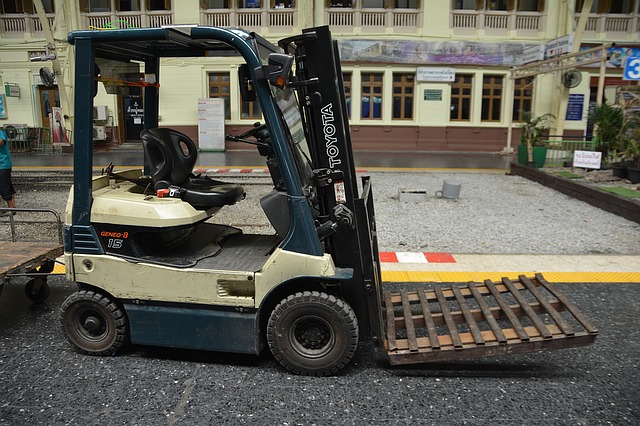Our modern world has been slowly but surely transformed by the introduction of a constant stream of new and ever-innovative technologies. No part of the world has been left untouched by technology, and that’s doubly true for warehouse logistics and distribution. Many new technological ideas are bringing significant changes to warehouses. Here are ten of the latest innovations that every warehouse CEO, manager, and supervisor should be observing and thinking about using.
1. Sustainable Solutions
Environmental friendliness and general sustainability have become major concerns for consumers and companies around the world in recent years. While this topic can feel overwhelming to tackle, there are technological solutions that can help you reduce waste, lower your emissions, and consume less energy. These same technologies can also make sure you’re complying with increasingly strict local and federal regulations surrounding the environment. Warehouses can be turned “smart” by equipping them with various monitors that track how much power is used and highlight areas where efficiency may be less than it should be. And other seemingly minor changes, such as swapping out fluorescent lights for LED lighting, can have a huge impact over time.
2. Connected Devices
Perhaps you’ve heard of the Internet of Things (IoT)? This concept can be a little confusing to grasp, but what it really amounts to is a space where all of the different devices are connected together via a network. For example, an Amazon Echo that’s hooked up to your home’s WiFi network can then interact with other things connected to the same network, such as your television, phone, or laptop computer. How does this relate to warehouses? With proper IoT implementation, you can reduce human workload by transmitting lists of items and their locations to robotic pickers. That’s just one example; the Internet of Things and connected devices can help improve almost every step of your process, from picking to packing to shipment and everything in between.

3. Cartonization
No matter how big or small your warehouse is, cartonization can speed up the process of getting items shipped out. With cartonization, every item in your inventory is assigned a specific size and type of box (or carton) for packaging. This gets rid of the time-consuming method of employees needing to find a box that matches for each item individually, as they’ll know what the ideal is right from the start.
4. Faster, Simpler Labeling
Where do errors most commonly show up during the process of packaging and shipping a product? Easily it’s the labeling part of the process. New print-and-apply labeling technology makes these kinds of errors much less likely. By tying your labeling technology into your IoT-connected network, your computers can make sure the proper labels are applied to the proper packages every time.
5. Taking Your Warehouse Management Systems (Or WMS) To The Cloud
Arguably the biggest shift in how warehouses are run has come with the introduction of computerized warehouse management solutions. But recent technology can make these already impressive systems even smoother by connecting them to the cloud. A cloud-based WMS allows a warehouse to run their system without having an in-house IT team. The cloud-based WMS can also be tweaked, patched, and updated without any downtime at the warehouse, and it can often even run on much less costly hardware.
6. Voice Commands
While almost every warehouse employee is familiar with scanning in barcodes or RFID chips in order to find the right items, voice picking is an increasingly popular method. In this method, an employee says the name of a product into a special microphone, and the computerized management system then automatically finds and picks the proper item. That reduces the workload and stress for pickers, as well as leaving their hands free to do other work.

7. New Handheld Devices
Many warehouses use handheld scanning devices to help increase the speed at which items can be located and picked. With the rise in fully implemented IoT and connected warehouses, though, new versions of these handheld devices can work much more efficiently. A handheld device connected to the internet can, for example, allow a warehouse to cut down on manual paperwork and let a computer-based inventory handle things. These new systems also can lead to a decrease in inventory loss, human error, and theft.
8. Smarter Warehouse Layout And Design
Building a warehouse is a careful balancing act between making things as efficient as possible while also trying to fit as many items as you possibly can into the space. New technology exists that can carefully go over your warehouse’s layout and help you optimize things. This isn’t just about fitting more product on the shelves, but also of making the space better to move through, and making the process of picking items faster
9. Data Analysis
Whether you realize it or not, your warehouse generates tons of data. There’s information about how many of each item is sold, what kind of customers you have, how quickly items are processed, and so much more. While collecting all of this information together is relatively easy, actually figuring out what any of it means is much more difficult. That’s why algorithms have been developed that can process and analyze all the data that comes in through your warehouse. These algorithms then pick out patterns you might not be aware of that can help you better improve your process, be more aware of which items to focus on, or even help predict things that might happen in the future. Purchasing data analysis software can cost a lot of money, but it also has great potential for making tons more in the future.
10. More Robots
Robotics is just beginning to have an impact on warehouses, and that’s only going to become more prominent in the future as robots and drones become more powerful, self-sufficient, and reliable. Even Amazon, the biggest warehouse operator in the U.S., has purchased the robotics startup Kiva Systems to help put itself ahead of the pack in this competitive new field. We’re not to the point where robots have entirely replaced human pickers, but many experts believe we’ll be there sooner rather than later, so the sooner your warehouse can invest in robotics systems, the better.

The Future Of Warehouse Distribution And Logistics Technology
As you can see from this list, warehouses have been greatly changed by the technological advances of the recent past, and they’re going to continue being transformed. No matter how fast it seems like things are changing; however, there’s never a bad time to try to catch up. Each new technology added to your process can lead to improved output, greater efficiency, and a better end result for you and your customers.
